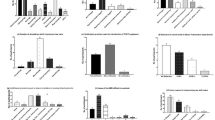Abstract
In essence, automation can be driven by several of the following incentives: increased processing capacity of the laboratory, better costs control through processes standardization, optimized traceability, or improved workflows to reduce turnaround times (TAT). This project aims at presenting an overview of the project management and change management with a focus on the major challenges addressed by lab staff and laboratory leadership during the different phases of the implementation of the WASPLab™ in a routine clinical bacteriology laboratory. This paper reports our experience and reviews changes in the bacteriology laboratory at Geneva University Hospitals when shifting to the WASPLab™. Practically, the whole automation process was segmented into different packages (specimen type-based segmentation) allowing sequential validation, staff training, and routine implementation. Such process allowed reaching 90% of the identified “automatable” samples within 1 year, including personal training, documentation for accreditation supported by publications, without interrupting routine operations. In addition, we implemented a validated automated solution for antimicrobial disk diffusion susceptibility testing. Structured supervision and accurate monitoring of all the activities related to the automation project including key partners such as IT support, technical committee, and after-sales service guaranteed a swift and timely achievement of the project allowing the improvement of the workflow in routine bacteriology within 1 year.



Similar content being viewed by others
References
Bailey AL, Ledeboer N, Burnham CD (2019) Clinical microbiology is growing up: the total laboratory automation revolution. Clin Chem 65:634–643
Croxatto A, Greub G (2017) Project management: importance for diagnostic laboratories. Clin Microbiol Infect 23:434–440
Thomson RB Jr, McElvania E (2019) Total laboratory automation: what is gained, what is lost, and who can afford it? Clin Lab Med 39:371–389
Burckhardt I (2018) Laboratory automation in clinical microbiology. Bioengineering (Basel) 5(4):102
Croxatto A, Prod’hom G, Faverjon F, Rochais Y, Greub G (2016) Laboratory automation in clinical bacteriology: what system to choose? Clin Microbiol Infect 22:217–235
Cherkaoui A, Renzi G, Vuilleumier N, Schrenzel J (2019) Copan wasplab automation significantly reduces incubation times and allows earlier culture readings. Clin Microbiol Infect 25:1430 e1435–1430 e1412
Cherkaoui A, Renzi G, Charretier Y, Blanc DS, Vuilleumier N, Schrenzel J (2019) Automated incubation and digital image analysis of chromogenic media using Copan Wasplab enables rapid detection of vancomycin-resistant enterococcus. Front Cell Infect Microbiol 9:379
Cherkaoui A, Renzi G, Azam N, Schorderet D, Vuilleumier N, Schrenzel J (2020) Rapid identification by maldi-tof/ms and antimicrobial disk diffusion susceptibility testing for positive blood cultures after a short incubation on the WASPLab. Eur J Clin Microbiol Infect Dis. https://doi.org/10.1007/s10096-020-03817-8
Cherkaoui A, Renzi G, Fischer A et al. (2019) Comparison of the Copan Wasplab incorporating the biorad expert system against the sirscan 2000 automatic for routine antimicrobial disk diffusion susceptibility testing. Clin Microbiol Infect. https://doi.org/10.1016/j.cmi.2019.11.008
Acknowledgments
The authors would like to thank all the individuals directly or indirectly involved in the total automation project of the Bacteriology Laboratory at Geneva University Hospitals. We would like to express our appreciation to Claire Poyart (France), Pierrette Melin (Belgium), Oliver Nolte (Switzerland), Nadia Liassine (Switzerland), Theo Liebregts (Netherland), and Simone Ambretti, Michela Paolucci (Italy), for their expert advices.
Author information
Authors and Affiliations
Contributions
Abdessalam CHERKAOUI: Clinical microbiologist Ph.D. (manager of the biological aspects)
Gesuele RENZI: Expert medical laboratory technologist (co-manager of the biological aspects)
Arnaud VIOLLET: Biomedical engineer (technical aspects)
Mark FLEISCHMANN: Computer system analyst (institutional LIS aspects)
Ludovic METRAL-BOFFOD: Computer system analyst (IT connexions)
David DOMINGUEZ-AMADO: Expert medical laboratory technologist (pre-analytical aspects)
Nicolas VUILLEUMIER: Head of division
Jacques SCHRENZEL: Head of the bacteriology laboratory (medical and strategical aspects)
Corresponding author
Ethics declarations
Conflict of interest
JS received restricted research grants and participated to advisory boards from BioMérieux and Debiopharm. NV received restricted research grants from Roche. The remaining authors declare no conflict of interest.
Additional information
Publisher’s note
Springer Nature remains neutral with regard to jurisdictional claims in published maps and institutional affiliations.
Rights and permissions
About this article
Cite this article
Cherkaoui, A., Renzi, G., Viollet, A. et al. Implementation of the WASPLab™ and first year achievements within a university hospital. Eur J Clin Microbiol Infect Dis 39, 1527–1534 (2020). https://doi.org/10.1007/s10096-020-03872-1
Received:
Accepted:
Published:
Issue Date:
DOI: https://doi.org/10.1007/s10096-020-03872-1




